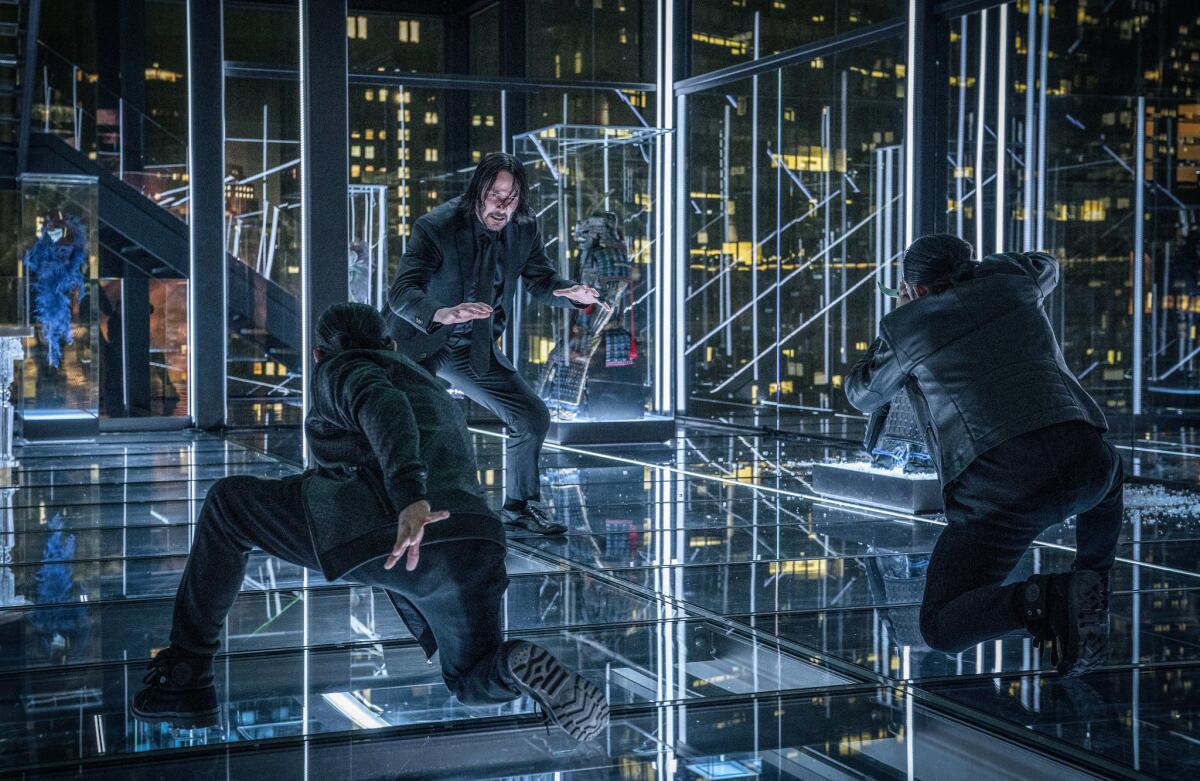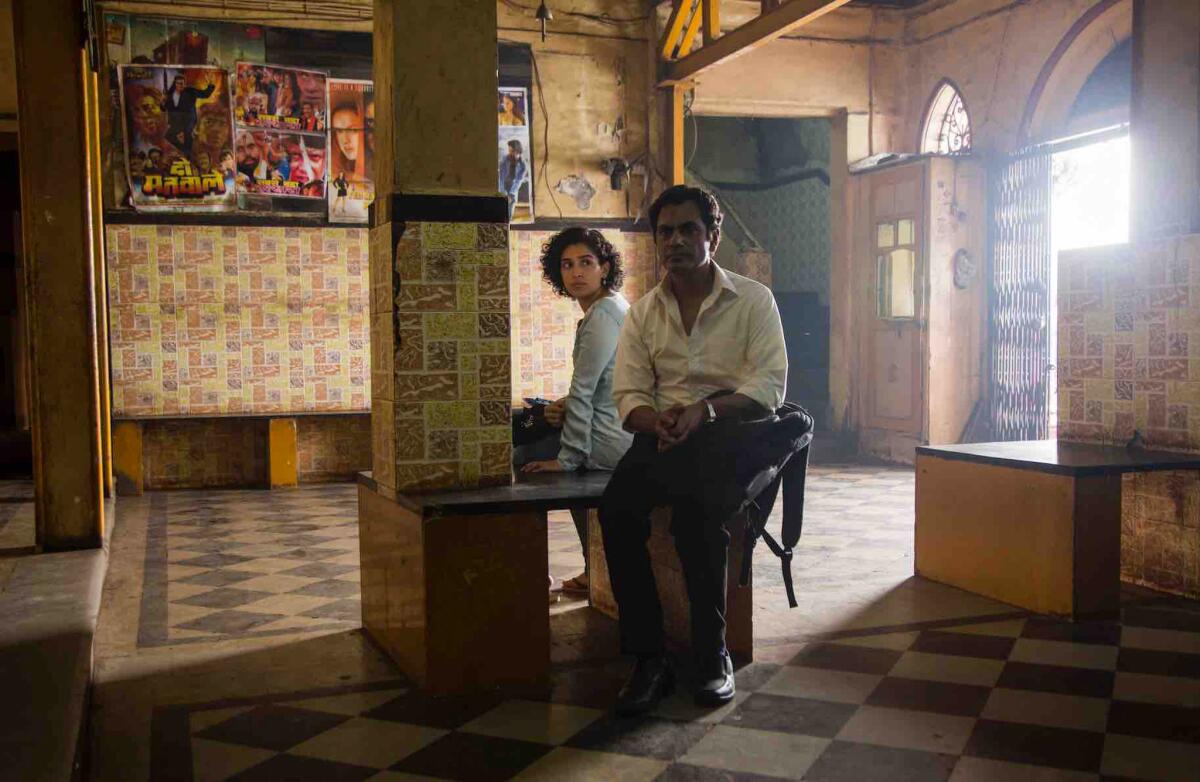Indie Focus: Making memories new in ‘The Souvenir’
Hello! I’m Mark Olsen. Welcome to another edition of your regular field guide to a world of Only Good Movies.
The Cannes Film Festival began this week, and Justin Chang, Amy Kaufman and Kenneth Turan are there covering for The Times.
Kenneth wrote an overview of this year’s fest, noting: “What a difference a year makes. Or does it? With the preeminent cinematic event that is the Festival de Cannes, both ways is the way it’s always going to be.”
Amy was at the opening press conference, where festival director Thierry Frémaux fielded questions on such topics as the festival’s strides toward gender parity and the controversy over giving a special prize to actor Alain Delon.
Amy also gave an inside view on the decidedly French pomp and circumstance that make up the ceremony around the festival’s opening night.
Justin wrote a diary of the festival’s first day, including the opening night screening of Jim Jarmusch’s zombie comedy, “The Dead Don’t Die,” starring Bill Murray, Adam Driver, Chloë Sevigny and Tilda Swinton.
Kenneth also interviewed Jarmusch, who said of his zombie apocalypse, “It’s not intended to be dark and fatalistic; I think of it as a funny film.”
Justin also wrote about the festival’s second day, including Kleber Mendonça Filho’s “Bacurau,” Ladj Ly’s “Les Misérables” and Quentin Dupieux’s “Deerskin.”
Justin also reviewed Dexter Fletcher’s musical “Rocketman,” in which Taron Egerton plays Elton John. As he wrote: “In his most aching moments, this Elton John seems to be singing not to others but to himself, reminding us that even the most universal pleasures can have intensely personal roots. Before it was your song, it was his.”
This Wednesday, May 22, we will be screening “Late Night,” starring Emma Thompson and Mindy Kaling, followed by a Q&A with director Nisha Ganatra. For info and updates, go to events.latimes.com.

‘The Souvenir’
One of the year’s most acclaimed films since its premiere at Sundance, “The Souvenir” is making its way to theaters. Directed by Joanna Hogg, the film is based on her experiences as a young woman, telling the story of a film student (Honor Swinton Byrne) who falls into a co-dependent relationship with an enigmatic man (Tom Burke). Swinton Byrne’s mother, Tilda Swinton, is a longtime friend of Hogg’s and appears in the movie as well.
Reviewing the film for The Times, Justin Chang wrote: “In its finest moments, ‘The Souvenir’ doesn’t just bring personal history into a wrenching present tense. It collapses the distance between the artist that Julie is becoming and the artist that Joanna Hogg has already become.”
I spoke to Hogg, Swinton Byrne, Burke and Swinton for a story on the movie and its unusual production method. On casting Swinton Byrne, Hogg said: “I was looking for someone who didn't inhabit the space in front of the camera, someone who was much more comfortable behind the camera because she's a filmmaker. I wasn't looking for a performer, I was looking for an artist and I found that incredibly difficult because I would meet a lot of actresses and they felt like actors.
“And with Honor, although she's not a filmmaker, she writes and she's very creative,” Hogg said. “So there was something I saw in her that connected with myself, with my younger self.”
For the New York Times, A.O. Scott wrote: “‘The Souvenir’ is one of my favorite movies of the year so far, but I almost want to keep it a secret. Partly because it’s the kind of film — we all have a collection of these, and of similar books and records, too — that feels like a private discovery, an experience you want to protect rather than talk about. A direct message like this, beamed from another person’s sensibility into your own sensorium, isn’t meant to be shared.”
For Slate, Dana Stevens mentioned the upcoming second part of “The Souvenir” when she wrote: “Ambiguous, finely shaded autobiographical dramas like this one don’t generally form the cornerstone of an expanded universe. But Honor Swinton Byrne, making her feature film debut, has created a character who’s complex (and at times maddening) enough to deserve further exploration. The problem with the coming-of-age picture is that it often ends just as the protagonist is turning into someone really worth getting to know. The question in the audience’s mind on saying goodbye to Julie—I wonder what’s next for her?—goes double for a writer-director like Joanna Hogg.”

‘John Wick: Chapter 3 – Parabellum”
The franchise of “John Wick” movies has been a recent highlight for fans of genre and action filmmaking. The latest, “John Wick: Chapter 3 – Parabellum” again finds Keanu Reeves as a dog-loving assassin fighting for his life against pretty much everyone else, from a horse, a motorcycle and with all manner of weapons. This time he has a new ally in a character played by Halle Berry, while Anjelica Huston, Laurence Fishburne, Ian McShane, Mark Dacascos and Asia Kate Dillon help round out the cast.
Reviewing the movie for The Times, Jen Yamato wrote: “The ‘John Wick’ movies speak a subtle dialect of fluent, artful action like few other franchises in Hollywood. ‘Parabellum’ excels when it tees up the sublimely inventive and wince-inducing close quarters fights with the lethally graceful Reeves baring John Wick’s psyche and soul between reloads and headshots. How far the saga can continue to spin arias out of that tune remains to be seen.”
Josh Rottenburg broke down the movie’s fight scene in the stacks of the New York Public Library between Reeves and 7-foot 3-inch NBA basketball player Boban Marjanović for a story that will publish soon. As director Chad Stahelski said: “A lot of people would avoid using the stacks because it’s difficult to shoot in and it would limit their choreography – you can’t do the big flying kicks and stuff like that. And we’re kind of the opposite. We think, 'What’s the hardest situation you can put someone in? And are we smart enough to figure it out?'”
At Rolling Stone, David Fear surveys what has made the “John Wick” series seem so fresh, noting: “Stahelski & Co’s pastiche curation has turned a star vehicle into a standard-setter for how to do big-screen-action-as-storytelling right ... Action films have become Big Macs. There’s a thrill in seeing someone take a recipe and add in unfamiliar yet complementary ingredients, give it an artisanal touch, put in the time to make it taste good even when served bloody rare. It’s transformed a B-movie series into A-plus genre outrageousness. It’s made one man’s name a shorthand for quality pandemonium.”

‘Photograph’
Returning to his native India for “Photograph,” writer-director Ritesh Batra creates a gentle romance set in modern Mumbai. A young photographer (Nawazuddin Siddiqui) persuades a woman (Sanya Malhotra) to pose as his fiancée after showing his grandmother a picture of her.
Reviewing the film for The Times, Gary Goldstein wrote that the movie, “captures the bustling, workaday sides of Mumbai life with vigor and passion while also treating us to several leafier, more urbane views of the city. Kudos to cinematographers Timothy Gillis and Ben Kutchins for the film’s many burnished, strikingly composed shots. It’s a beautiful, resonant film.”
For The Times, Kavita Daswani spoke to Batra, who said of the inspiration behind the film: “I was eager to get back to my own writing, and to directing my own writing … When you’re working with your own writing, you’re more intimately familiar with it. You can feel it in your bones. It's easier to direct.”
Reviewing for the New York Times, Aisha Harris added: “If the story is familiar, the storytelling can be immersive — Batra shades in the leads and their worlds with a human specificity that makes ‘Photograph’ compelling in a slice-of-life way, particularly regarding class in India… Such societal details aren’t hammered in; they’re embedded as seamlessly as they tend to be in real life.”
Email me if you have questions, comments or suggestions, and follow me on Twitter: @IndieFocus.
Only good movies
Get the Indie Focus newsletter, Mark Olsen's weekly guide to the world of cinema.
You may occasionally receive promotional content from the Los Angeles Times.




